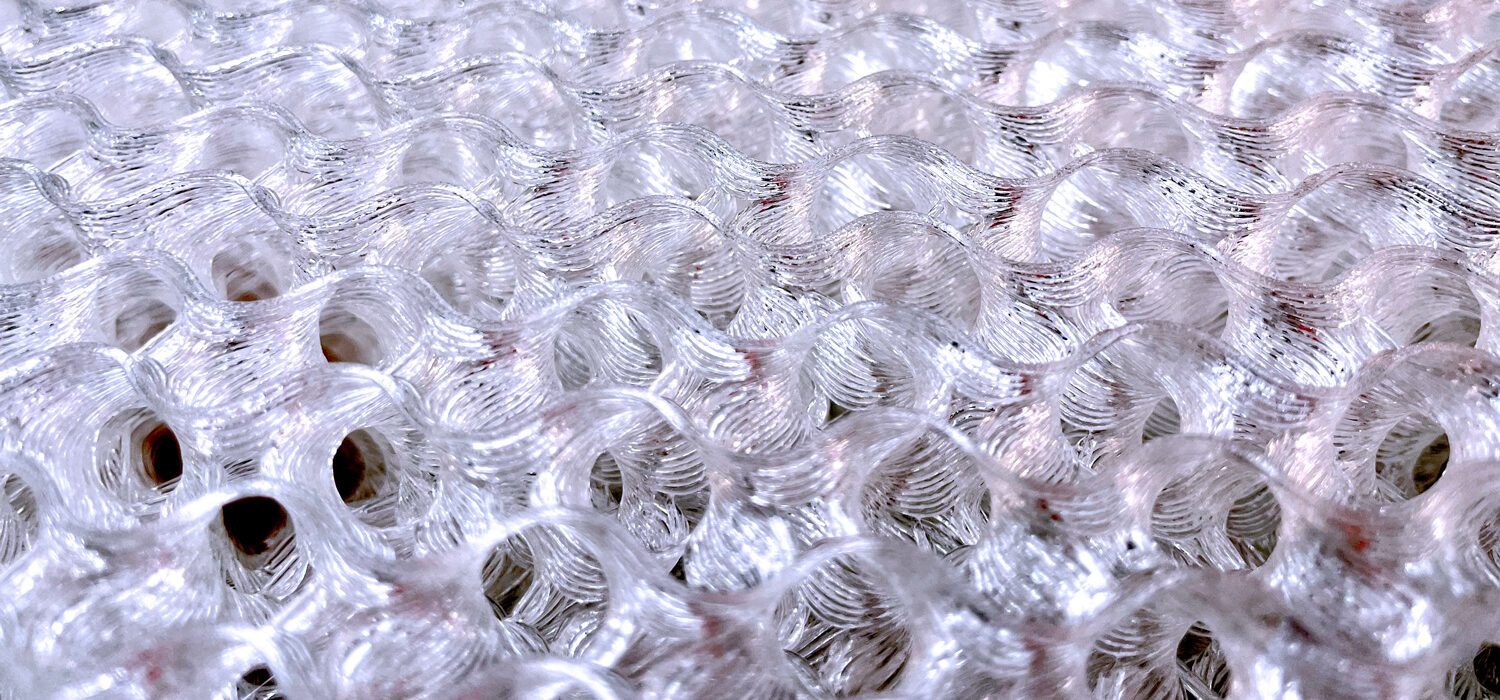Modifiers make a difference
Additive manufacturing offers numerous advantages over traditional manufacturing and crafting methods, especially orthopedics. Beyond fast lead times and reduced material usage, it provides precise control over an object’s internal structure, which adds extra value when creating orthopedic devices. With extrusion-based 3D printing technology and our REALvision Embrace CAM Software, we enable this high level of customization, which gives patient-specific devices improved features and value.
In this article, we explore the modifier concept in our CAM software, REALvision Embrace. This software is an integral part of our Embrace Solutions portfolio, which enhances the final product’s functionality and the end-user’s comfort.
Fact Box: Extrusion-Based Printing in Orthopedics
- Definition: A 3D printing process where material is extruded layer by layer to create complex structures.
- Benefits: Customization, material efficiency, and the ability to produce intricate internal geometries.
- Applications: Orthopedic insoles, spinal braces, custom sitting aids.
Our orthopedic solutions employ either a multi-stiffness scale or a multi-hardness scale:
- Multi-stiffness scale: Designed for correction braces, it ranges from rigid to flexible. This feature allows for precise differentiation between rigid correction zones and flexible comfort areas, optimizing patient comfort and therapeutic effectiveness.
- Multi-hardness scale: This scale ranges from extra soft to extra hard and is utilized in Programmable Foam® applications such as custom sitting aids and insoles. It is ideal for distributing pressure uniformly or combining a supportive hard shell with a cushioned soft core for enhanced patient comfort.
These advanced technologies enable us to meticulously control the internal structure of orthopedic devices, resulting in superior products like orthopedic insoles, custom sitting aids, and spinal correction braces. Through REALvision Embrace, orthopedic professionals can achieve unprecedented levels of customization and efficacy in their treatment solutions.
Modifiers: Control the internal structure
First, import the main 3D model into REALvision Embrace and select the desired hardness or stiffness level for the entire model. Next, utilize modifiers to designate areas that require different properties, such as increased hardness, softness, flexibility, or stiffness.
Modifiers enable you to adjust the internal structure of a printed object, providing varied properties within different sections. In REALvision Embrace, our patented gradient transition technology allows for smooth shifts between zones with different settings, ensuring that the user does not feel any abrupt changes in structure.
How to add the modifiers
We offer several methods for defining modifiers in the REALvision Embrace software. Here are our three preferred techniques for applying modifiers to sitting aids and cushion applications:
1: Geometric Shapes:
Starting with geometric shapes provides excellent control and is an easy way to explore the extensive possibilities of modifying an object. Import 3D models in STL or OBJ format into REALvision Embrace.
- Standard Geometric Shapes: Typically defined in CAD software and imported into REALvision Embrace, these shapes can be metrically scaled and placed manually or by coordinates.
- Customized Shapes: Designed based on user-specific conditions, such as asymmetrical positioning or precisely placed zones in a brace. These shapes can also be scaled and positioned accurately.
2: Paint-On Modifiers:
Use a digital paintbrush within the REALvision Embrace software to design modifiers directly on the 3D object. This method allows designers to “paint” areas where they wish to modify hardness and structure. The painted areas can define a surface from which a modifier can be automatically generated with a given thickness.
3: Model Duplication for Cushioning Layers:
Create an overall soft cushioning layer by duplicating the 3D model and slightly scaling it down. The new, smaller model acts as a modifier. Adjust the height on the Z coordinate of the new duplicated model to control the thickness of the cushioning layer.
Combining the above methods can achieve complex internal structures. This can be done by ordering the priority list of the relevant modifiers. Once you are happy with the structure and the model is ready to print, all that pre-programmed complexity can be easily 3D printed.
These methods provide orthopedic professionals with versatile tools for creating highly customized sitting aids tailored to meet individual patient needs.
Results and benefits
Controlling the internal structure of a 3D-printed object with modifiers allows for mimicking different material behaviors in sitting aids. High-end wheelchair cushions often mix materials like visco foam, gel bladders, and enclosed air elements for pressure relief areas. This technology simplifies traditional, manual, and complex production methods that typically involve combining various materials using gluing or velcro and complicating disposal at the end of the product’s life.
Applying modifiers to sitting aids:
The modifiers can create areas that:
- Purposely Control Collapse: Design specific zones to collapse under pressure for targeted support.
- Support and Create Harder Zones: Define areas with increased hardness for stability and support.
- Soft Enveloping Effect: Simulate low-shore hardness foam for a comfortable, enveloping feel.
You can create complex structures with a single base material, optimizing material use and enhancing product functionality.
Modifiers can be used in many ways, including considering the end user’s body weight. For example, a small kid can benefit from soft seating that provides comfort. Modifiers can also be applied using a pressure map and implementing soft areas to alleviate pressure points.
Applying modifiers to correction braces:
Optimizing material use in correction braces can result in a lightweight end product while prioritizing correction and comfort. Modifiers allow for:
- Custom Stiffness Zones: Incorporate varying stiffness within the brace to provide support and flexibility for comfort.
- Lightweight Design: Reduce material usage while maintaining structural integrity.
- Easy Recycling: Since the brace is made from one base material, it can be easily recycled without manual separation and sorting when no longer needed.
This innovative approach ensures that orthopedic products meet therapeutic needs and align with sustainability goals.



